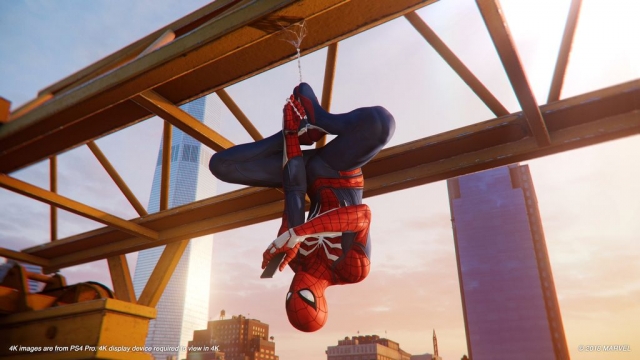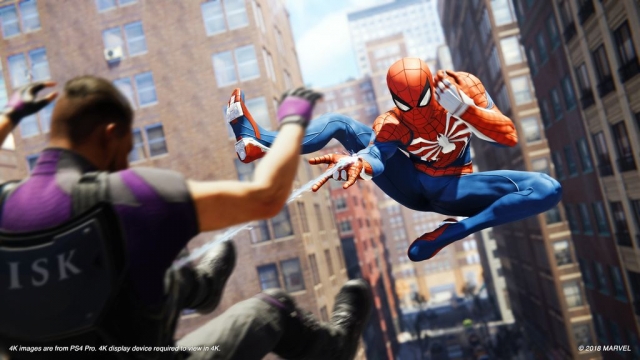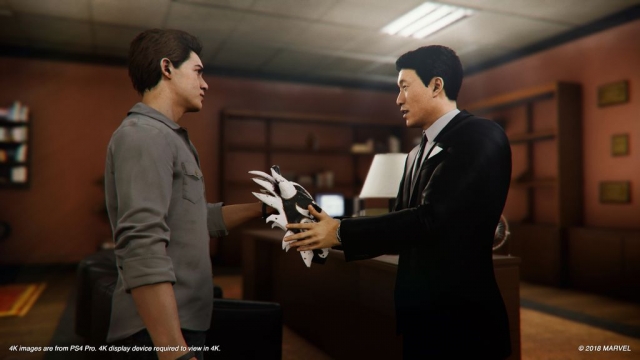Marvel’s Spider-Man

Spider-Man has been an iconic character in the comic world for 50 years now, but he’s definitely had more downs than ups when it came to gaming. The earliest games on the Atari 2600 and NES honestly couldn’t quite do the character justice – but that started to change in a big way in the 16-bit era. Sega’s arcade game showed the character could work in a brawler, while the many versions of Spider-Man vs. the Kingpin allowed him to start in some genuinely good games. Sure, the Sega CD version’s voice acting and animation were iffy, but its CD-quality rock soundtrack was great. The 32-bit era was quite kind to the web slinger, and after that, we got some bonafide classics in Spider-Man 2 and Ultimate Spider-Man. They truly nailed what Spider-Man should feel like swinging around New York City, with the latter featuring a far more streamlined setup overall and a snappier pace. Afterwards, a few pretty good games came from Beenix with Shattered Dimensions and a lesser entry in Edge of Time. Since those days through, the Amazing Spider-Man games inspired by the film series definitely hurt things. They lacked the polish of past games and definitely felt closer to the licensed tie-ins of the LJN days than the more focused efforts. When Sony showed off Marvel’s Spider-Man, jaws dropped.
Beyond just seeing Spidey in a new game, it has been a long time since a licensed property got the AAA-level first party-exclusive treatment. Insomniac Games was announced as the developer and all of a sudden, things got really interesting. They have shown a mastery of fast-paced action games with their many Ratchet and Clank offerings and the more recent Sunset Overdrive showcasing that they can mesh fast pacing with an open world. In a sense, Spider-Man feels like their master thesis on game design because you can see little bits and pieces from what they’ve done before here – not in the form of references, but instead in the form of rock-solid game design.
Spider-Man’s wise-ass mentality can be tough to capture in a game – but Insomniac found a way to make it all work. Both this and the Ratchet and Clank games find ways to give you insight into a character because they have characters talk back to others – but Spidey does it in a real-time and in cutscenes. Having Spidey talk back to J. Jonah Jameson’s radio broadcasts against him also show off some of the best in-game radio work outside of the GTA franchise. It builds up the universe within the game while keeping things in-line with what Spidey fans are familiar with without maintaining a pure status quo. Here, Jonah is an author and doesn’t control the Daily Bugle – but maintains his anti-Spidey crusade.
Since the rise of the Batman: Arkham games, many superhero games have fallen victim to trying to replicate its combat system and doing little else. After all, it’s a gameplay formula that worked – but did so for that specific character for a reason. Batman is a more lumbering character and so the mix of defense and then some robotic-looking canned offense kind of made sense for that character to use. Spider-Man, being far more nimble, requires a different skillset. Many games have had him web up enemies and climb up walls, and most have given him some kind of melee combat options as well. This incarnation features the best overall usage of his environment alongside combat that flows and fits the character.
This version of Spider-Man uses his environment to smash enemies whenever he can – so if he’s in a street brawl with thugs attempting a robbery, he can toss objects on them from the street or even tear the doors of their car and whip them at his foes. The core combat blends not only traditional melee combat, but his regular webbing in a great many ways. You can trap foes with your web by blasting them over and over – or earning impact webbing and trapping them on walls for a bit of extra fun. Spider-Sense allows you to get some crazy action going as you can avoid one enemy’s blow, then attack someone else, take them out, and then go back to the original enemy.
Building up your focus meter allows you to unleash slick finishing moves, while skillful play is rewarded with being able to heal a bit during combat – a must during boss battles or long endurance battles with waves of enemies. There’s a bit of stealth on display too, and Spider-Man is quite forgiving when it comes to stealth. You can make a mistake and still take foes out and not get an instant-failure unless it’s story-driven. The core game’s story has Spider-Man still out to save NYC while taking out the Kingpin and any of his rogues gallery that get in his way. He has a lot of side activities he can do – and some involve Peter Parker actually having to be productive as Peter Parker! The mission variety is fairly robust, and mixes in things from Peter’s life and career – like science and photography, in ways that haven’t been done yet in a game.
Visually, Spider-Man is one of the finest games on the PlayStation 4. Spidey’s character model and many suits are lush and full of little touches. The world itself is a sight to behold, with a giant open world to explore and a realistic-looking version of NYC to save people in – or web sling around if you so desire. The webhead’s animations are silky-smooth and robust, with a lot of fluidity that other games have struggled to come close to. Character faces look pretty good too – with emotions being articulated accurately, and redone versions of the well-known cast of characters that manage to get across what they’re thinking with a quick glance instead of having to exposit a great deal. It isn’t all perfect though – I did encounter one issue where, in a very small fighting area, textures were popping in and out of place. It was an isolated incident, and is something that will hopefully be patched out soon after launch.
Spider-Man’s sound design is some of the best in modern-day gaming. The voice work is outstanding, with the cast giving admirable performances and the soundtrack feeling as epic as a big-budget Hollywood movie. The city itself shines as you can hear vehicular traffic on the ground and the wind blowing past Spidey as he swings through the environment. There is a fairly broad array of listening options too – with a few home theater setups for low, medium, and high-end systems alongside traditional TV speaker optimization and a headphone mode. Trying both the headphone mode and television speaker setup showcased just how much work went into the sound design because with a good pair of headphones on, you can hear all of those subtle noises from the pedestrians. Depending on your headset, you can also get a better idea of where enemies are spacially in comparison to Spider-Man and plan attacks accordingly.
Marvel’s Spider-Man is the best gaming representation of the legendary comic book character to date. Insomniac nailed the smartass tone that has been his calling card better than anyone else and the core action is faster here, with a solid blend of combat and world exploration. It looks great and controls like a dream. Spider-Man has had his troubles in gaming, but Insomniac’s effort checks all the boxes for a top-shelf Spidey experience and delivers a solid storyline that brings its own unique universe to the mix to tell an all-new tale that keeps you engaged and adds some gravitas to everything you do.
Reviewed By: Jeremy Peeples
Publisher: Sony Interactive Entertainment
Rating: 95%
——————————————————————————–
This review is based on a digital copy of Marvel’s Spider-Man for the PlayStation 4 provided by Sony Interactive Entertainment.
 Game Over Online
Game Over Online









